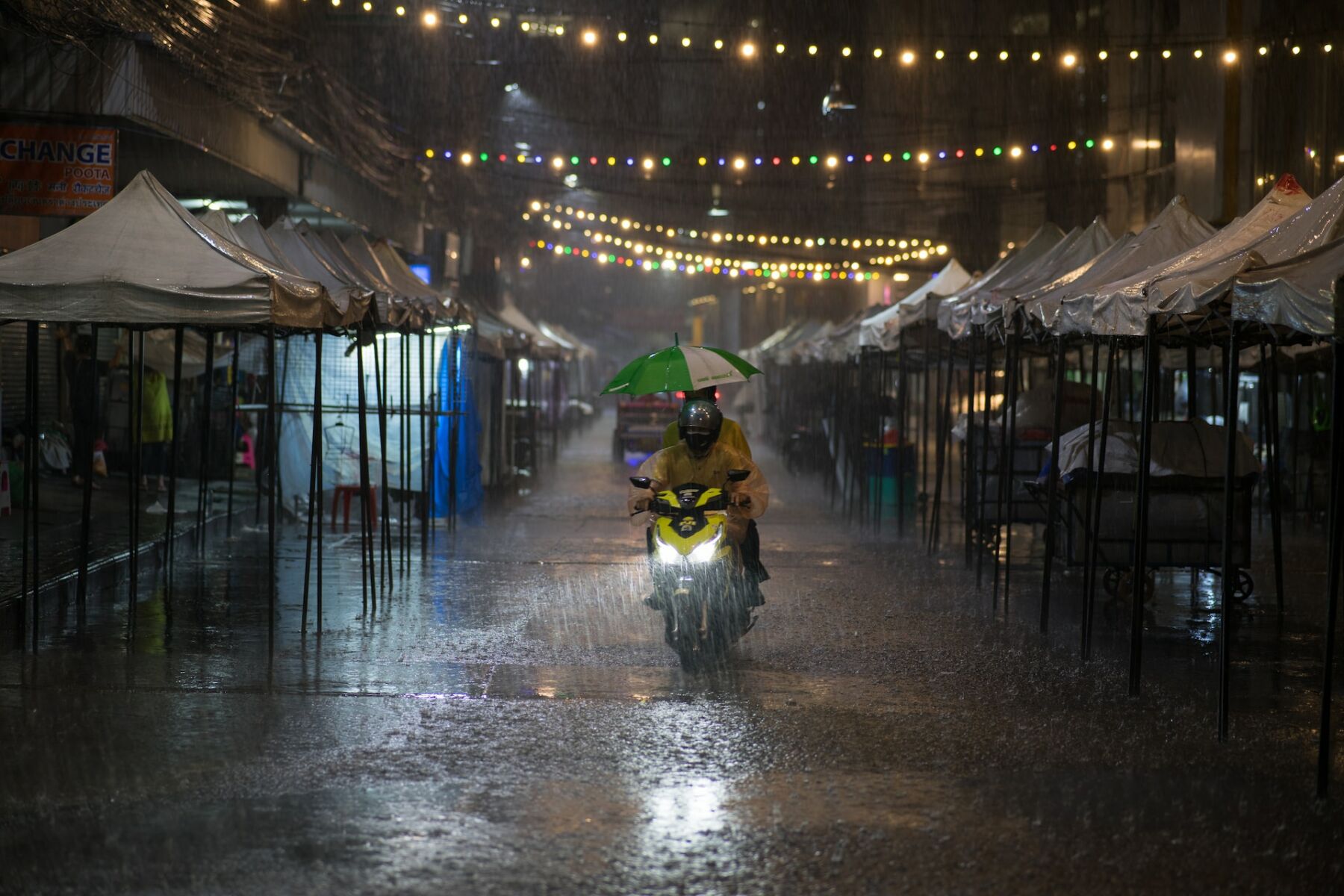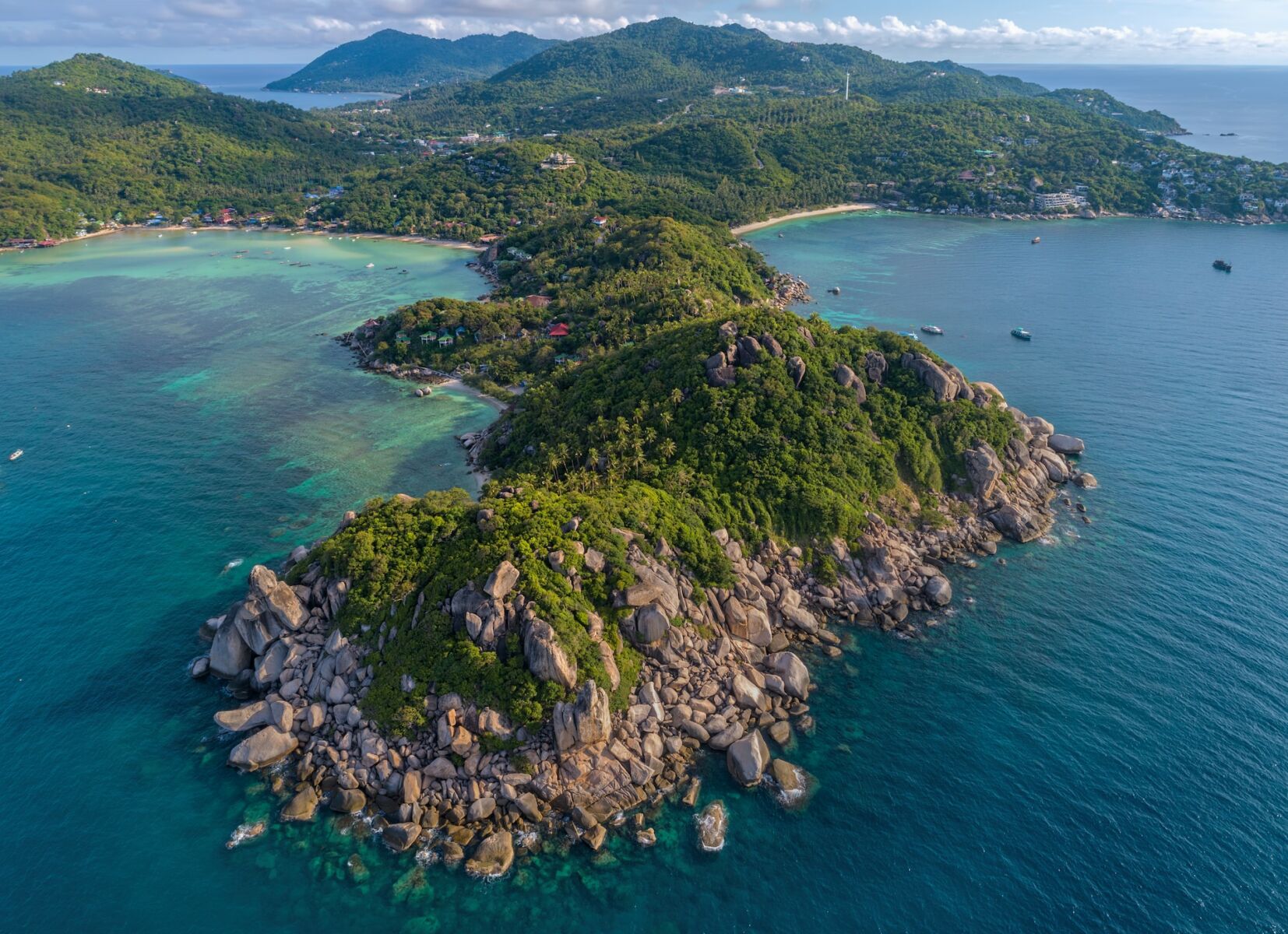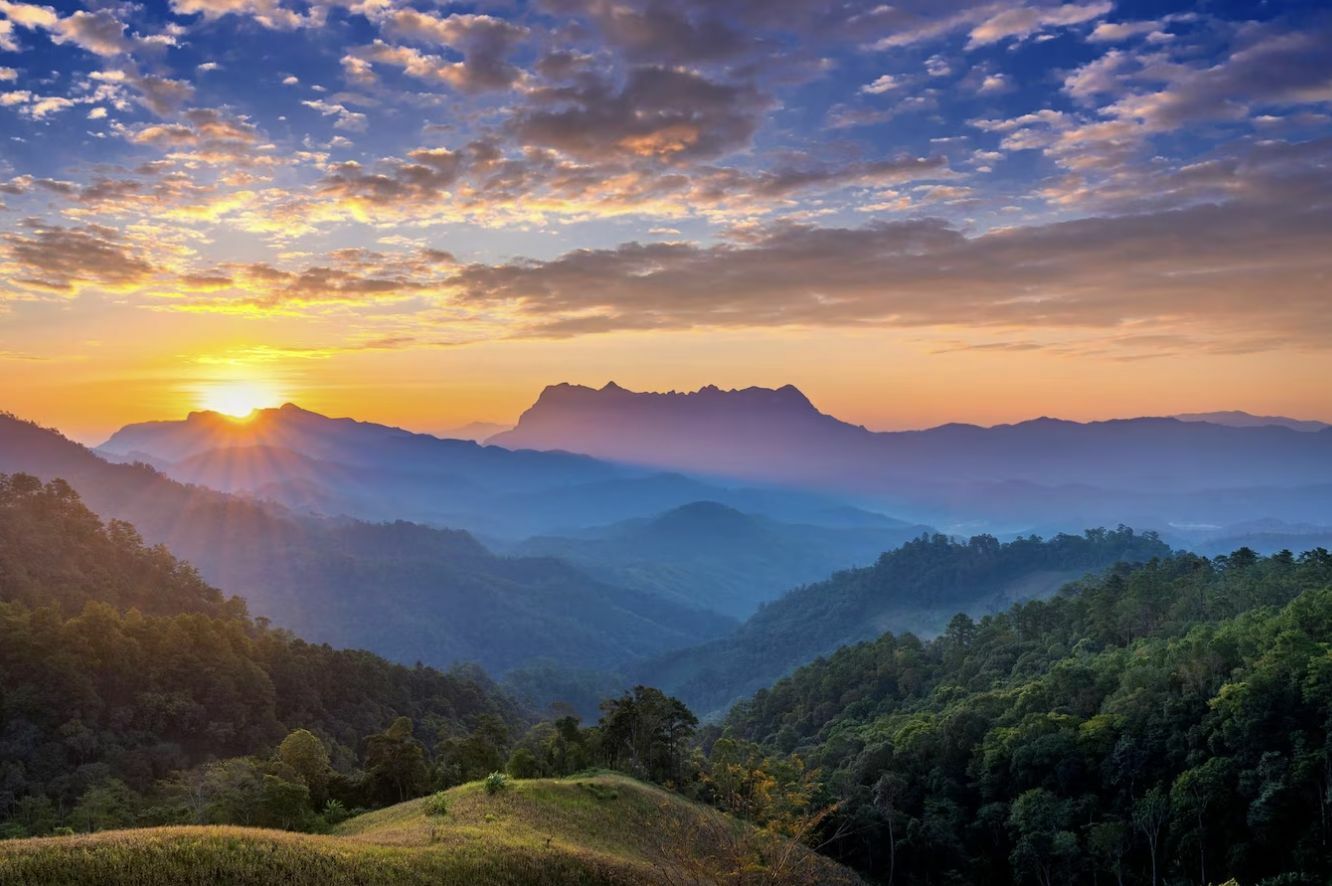What you need to know about the monsoon season in Thailand

In the world of travel, the term’ monsoon’ can often induce furrowed brows and muttered curses. That’s why it’s good to know what’s up with this monsoon season in Thailand. If you play it right, you can turn those rainy-day blues into an awesome adventure.
When is the rainy season in Thailand?

Thailand’s climate is shaped by two predominant monsoons: the southwest and northeast monsoons. Originating from the Indian Ocean, the southwest monsoon carries moist air in a north-easterly direction across Thailand from the Andaman Sea. This moist air fills the space left by the rising warm air over the Southeast Asian mainland. The southwest monsoon typically swings into action from May to October and ushers in the rainy season for most of Thailand. However, the rainy season officially kicks off in June and rolls on until late October.
Yes, the monsoon season does bring on heavy, unpredictable showers, especially in July, but bear in mind that it rarely rains cats and dogs all day. Where rainfall can be short and sharp, you’re quite likely to see a sunny sky. Rain usually graces the afternoons or evenings, lasting only a couple of hours in general.
By the time August and September roll around, rainfalls can intensify and last longer, sometimes spanning days. However, the unrelenting rainfall isn’t a nationwide phenomenon; intensity varies regionally, with southern islands receiving less rain, for instance.
The Gulf Islands have a unique weather pattern

The monsoon season operates differently on the south’s east coast, including the Gulf Islands, such as Koh Phangan, Koh Tao, and Koh Samui. These islands begin their monsoon season later in the year, experiencing heavy rainfall from October to December, with the heaviest showers occurring in October and November.
So when is the best time to visit Thailand?

The consensus is that November to March marks the finest time to experience Thailand in all its glory. The dry, cooler season prevails during these months, with temperatures pleasantly oscillating between 23 and 33°C (73 to 91°F). Consequently, this period sees the most significant tourist influx.
However, there’s a case to be made for the quieter, rain-laden low season. If you don’t have a problem navigating through some rain, the off-peak season can be incredibly rewarding. It offers fantastic value, quieter attractions, and a unique perspective of this captivating country.
What is the rainy season like in different regions?
If you’re planning to visit during the rainy season, here’s what you need to know about monsoon patterns across various regions in Thailand:
Central provinces experience peak rainy season in September

In the central parts like Bangkok, the rain kicks in around June or early July, maxing out in September. The rain dumps mostly overnight before upping its game to almost daily showers by July and August. But don’t stress – it’s rare for the rain to hang around all day in Bangkok. It means you can still check out the must-sees like the Grand Palace and Wat Arun, hit the shopping scene, or even take a cooking class.
Longer monsoon in Northern Thailand

Northern Thailand sees a more elongated monsoon season than Bangkok. It commences in May and extends until November, with the most rainlogged months being July and August, making outdoor activities less plausible. Nevertheless, Chiang Mai, given its higher altitude, is cooler and less humid than Bangkok. It promises robust downpours, which are confined to a couple of hours each day during the afternoon and evenings. The rains bathe the region’s flora, leading to bountiful thrives and blooms in the rice fields and mountain greenery – a delight for nature connoisseurs.
Northeast Thailand sees milder monsoon

Contrarily, Northeast Thailand enjoys a more subdued rainy season, spanning May to October, with a majority of the annual rain gracing the area during August and September. The renewed lush greenery, post rains in this region, is also a sight to behold for those who appreciate nature at its verdant best. Thus, be sure to come to Isan during these months.
Intense rainfall in East Thailand

Extending generally from late May till the end of October, areas like Koh Chang and other islands off Trat province in Eastern Thailand may experience quite heavy rains in the monsoon season. The rough seas make certain islands less accessible during these months.
Violent rainy season on Southern Thailand’s west coast

Down South, Phuket, Koh Phi Phi, Koh Lanta, or Krabi get heavier rainfall during the southwest monsoon season. You should brace yourself for rain every day when you travel to this region from June to September. The flip side, though, is that you get perfect surfing conditions. Also, there’s plenty of indoor fun to be had, from shopping to massages to cafés and bars.
The East Coast of Southern Thailand experience the rainy season in a different period

As explained before, the islands like Koh Samui, Koh Phangan, and Koh Tao over on the east coast of southern Thailand have their rainy season starting a bit later, around October, and ending in December. Sure, you’ll get rain, but it’s usually more like morning showers that don’t last more than a few hours. The rest of the day, it dries up pretty fast, and you can still enjoy the sun. What’s more, the beaches are less crowded, and accommodation costs are lower.
What to keep in mind if you’re planning to visit Thailand during the rainy season

Here’s the scoop if you’re planning to visit Thailand during the wet season:
1. Brace yourselves for flooding
When you’re visiting Thailand in monsoon season, be prepared to take the occasional paddle. Despite the government’s best efforts, flooding’s kind of a thing during the rainy season.
2. Be weather-wise
If you’re heading to the hills or islands, be sure to keep an eye on the weather reports. Heavy rain could mean landslides in the highlands or flooding in low-lying areas. Island hopping in bad weather? Not a good idea. Staying informed can help dodge those weather curveballs.
3. Go with the flow
A rigid plan and a monsoon don’t mix. You might have to juggle things when a storm rolls in out of the blue, causing delayed flights or cancelled ferries. Having a couple of flex days up your sleeve each week can save a lot of stress and let you enjoy the ride.
4. Be smart with your bookings
If you’re betting on the weather, you might want to think twice about booking accommodation or tours on outlying islands that are only accessible by boat. You don’t want to be left stranded by a cancelled ferry service.
5. Pack for wet weather
Think waterproof and quick-drying when you’re packing. Stuff like waterproof bags are a godsend for keeping your things dry, and a sturdy travel umbrella obviously can’t go amiss. Lightweight, quick-drying clothes are your friend, along with some non-slip footwear.
6. Get covered
Before you take your flight, ensure that you have travel insurance that covers potential concerns like travel hold-ups or disturbances. Having proper coverage makes for a stress-free travel experience, even when the weather might not be cooperative.
7. Don’t underestimate the weather
With monsoon can come a host of weather-related illnesses like flu, fever- you name it. Aside from travel insurance, having comprehensive health insurance lined up can take the sting out of any medical costs leaving you to focus on getting back to enjoying your trip.
Come rain or shine, Thailand is waiting to dazzle. Armed with the right info about the monsoon season, you can plan your trip perfectly and enjoy the best that this tropical paradise has to offer. Safe travels!
Latest Thailand News
Follow The Thaiger on Google News:


























